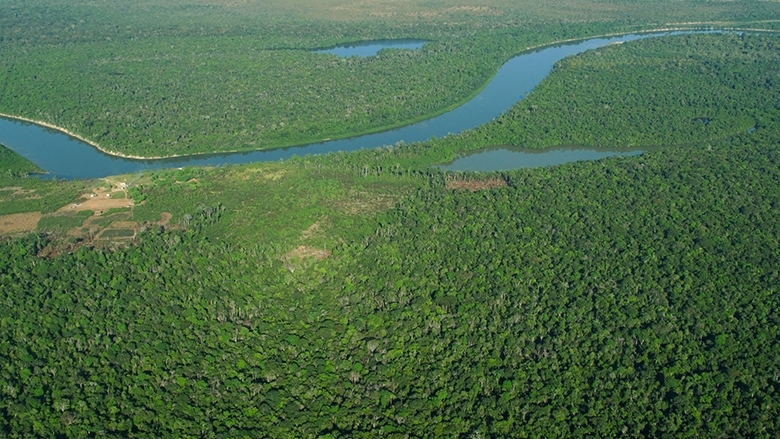Did you know that in the last 10 years, Brazil has: cut its greenhouse gas emissions in half (the only major global economy to do so), reduced deforestation in the Amazon by 82%, started several programs to restore forests, passed important land use regulations (such as the Forest Code) and led the global discussion on climate and the environment?
All these achievements are acknowledged and discussed in the new Systematic Country Diagnostic (SCD), a study that kicks off the World Bank's new partnership strategy with Brazil for the next four years. The paper lists several of the country's key policies for building a green development model for the planet.
“These advances result from concerted work on all levels of government in Brazil since Rio-92," states Gregor Wolf, head of the World Bank's sustainable development program in Brazil.
These efforts include, among others, policies to increase the number of protected areas, improved inspections (for instance, by using satellites) and economic incentives put in place for communities to explore forests sustainably. One example of a structuring public policy program was the Action Plan for the Prevention and Control of Deforestation in the Legal Amazon (PPCDAm), introduced in 2004.
This work also entails creating and strengthening institutions like the Brazilian Forest Service (created in 2006) and the Chico Mendes Institute for Biodiversity Conservation (ICMBio), founded in the following year. The former is tasked with managing Brazilian forests; the latter manages conservation units established by the Federal Government.
Local Communities
The Amazon Region Protected Areas Program (ARPA) has also contributed to the positive results seen in the country. ARPA is implemented by the Brazilian government, funded by the World Wildlife Fund (GEF) and managed by the World Bank, with partners like the German government, WWF and several international donors.
The program has greatly expanded the country's protected forest areas. It currently funds 114 federal and state areas (including areas of restricted and sustainable use) in a total of 58.3 million hectares; the local communities always participate in the management and conservation of these areas.
“Well-structured programs in support of traditional communities can have positive effects on the poverty levels of these communities and may also prevent deforestation", states the SCD.
In addition to involving the Amazon population, ARPA has created innovative mechanisms for managing protected areas, such as the "escrow account" system. This system can be used to transfer small amounts of money to property managers - facilitating, among other things, the purchase of fuel and the work involved in inspection.
The program has also implemented a biodiversity monitoring system in a few selected areas, directly involving the local populations in data collection and using innovative remote registering methodologies.
The success of policies aimed at the Amazon has given rise to new conservation and restoration initiatives in other Brazilian biomes, which must contend with challenges like:
- Fragmentation of the forest cover (in the Atlantic forest)
- The expansion of the agricultural frontier, often accompanied by illegal logging and violent conflicts between squatters and indigenous peoples (in the Amazon and Cerrado regions)
- Profound changes in land use and susceptibility to invasive species (Pampas)
- The risk of desertification (Caatinga)
- Changes in the flood regimes of rivers (Pantanal wetlands)

